Table of contents
- What Is A Reselling Business?
- Advantages of a Reselling Business
- 10 High-Demand Reselling Business Ideas
- 1. Used and Vintage Clothing Reselling
- 2. Refurbished Electronics Reselling
- 3. Wholesale Clothing Reselling
- 4. Print-on-Demand Products Reselling
- 5. Antique and Vintage Items Reselling
- 6. Luxury Goods Reselling (Handbags, Watches, Accessories)
- 7. Sneaker Reselling
- 8. Home Decor and Furnishings Reselling
- 9. Books and Stationery Reselling
- 10. Baby and Kids Products Reselling
- Conclusion
- Frequently Asked Questions (FAQs)
The reselling business is gaining significant traction in India, offering a flexible and often low-investment way to earn income. It involves purchasing goods from various sources and selling them at a profit, either online or offline. With the growth of e-commerce and a rising consumer appetite for diverse products, the opportunities in the reselling sector are vast. This article explores the top 10 high-demand reselling business ideas in India, providing a detailed look at each to help aspiring entrepreneurs get started.
What Is A Reselling Business?
A reselling business is a business model where an individual or company purchases goods or products from various sources with the primary intention of selling them to end consumers at a profit. The reseller acts as an intermediary, buying low and selling high, without typically being involved in the original manufacturing or production of the goods.
In simpler terms, a reseller finds products they believe they can sell for a higher price than they paid for them and then markets and distributes those products to customers.
Here’s a breakdown of the key aspects:
- Sourcing: Resellers acquire products from various avenues, such as wholesalers, distributors, manufacturers, liquidation sales, thrift stores, online marketplaces, or even individuals.
- Markup: The core of the business is the markup, which is the difference between the cost the reseller pays for the goods and the price at which they sell them. This difference covers their expenses and generates profit.
- Sales Channels: Resellers utilize various platforms to reach their customers, including online marketplaces (like eBay, Amazon, Etsy, local classifieds), social media platforms, their own e-commerce websites, pop-up shops, or physical stores.
- No Original Production: Unlike businesses that manufacture their own products, resellers focus on sourcing existing goods.
- Value Addition: Resellers add value by curating products, marketing them effectively, providing customer service, and making the products accessible to a specific target audience.
Think of it like this: Instead of a factory making toys and selling them directly, a reseller might buy those toys in bulk at a discount and then sell them individually at a local fair or online for a higher price.
Reselling can be applied to a vast array of products, from clothing and electronics to books and collectibles. The success of a reselling business often depends on the reseller’s ability to identify profitable products, source them efficiently, and market them effectively to the right customers.
Advantages of a Reselling Business
Starting and running a reselling business offers several compelling advantages:
- Low Initial Investment: Compared to businesses that require product development, manufacturing, or large physical storefronts, reselling can often be started with a relatively small amount of capital. You primarily invest in purchasing inventory, and in some models like dropshipping or print-on-demand (where you don’t hold inventory), the initial investment can be even lower.
- Flexibility and Variety: Resellers have the flexibility to choose what products they want to sell and can easily adapt to changing market trends. You can experiment with different niches and product categories without being tied down to a single product line.
- Quick Business Launch: You don’t need to spend time on product creation, design, or production. You can start selling as soon as you source your initial inventory or set up your online store with a dropshipping supplier.
- Lower Risk: By not investing heavily in product development or large inventories (in some models), the financial risk associated with a reselling business can be lower than in other types of ventures.
- Leveraging Existing Demand: You can capitalize on the existing demand for established brands or popular product categories, making it easier to find customers.
- Potential for High Profit Margins: If you can source products at significantly lower prices and identify items with high demand or scarcity, you can achieve substantial profit margins.
- Scalability: Depending on your chosen niche and business model, reselling can be scaled up by expanding your product offerings, reaching a wider audience through online platforms, or hiring help for tasks like sourcing and shipping.
- Work from Anywhere: Many reselling businesses, especially those operating online, offer the flexibility to work from home or any location with internet access.
- Opportunity to Specialize: You can focus on a specific niche or product category that you are passionate about or have expertise in, allowing you to cater to a dedicated customer base.
- Sustainability (in some niches): Reselling used or vintage items contributes to a more sustainable economy by giving products a second life and reducing waste.
10 High-Demand Reselling Business Ideas
1. Used and Vintage Clothing Reselling
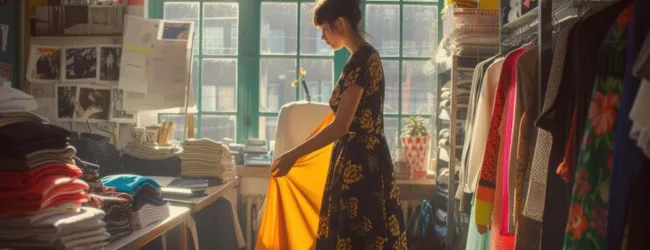
Sourcing pre-owned clothing, including vintage items and trendy second-hand garments, and reselling them through online platforms or pop-up shops.
a. Why this Idea:
- Growing awareness about sustainable fashion and the environmental impact of fast fashion is driving demand for used clothing.
- Vintage clothing has a unique appeal and can fetch high prices among enthusiasts.
- Online platforms make it easy to reach a wide audience.
- Relatively low initial investment as sourcing can be done from thrift stores, personal wardrobes, and wholesale suppliers of used clothing.
b. Licenses Required: Generally, no specific business license is required to start a small-scale online reselling business of used clothing in India. However, if you plan to operate a physical store or have a significant turnover, registering your business as a sole proprietorship or LLP and obtaining a GST registration might be necessary.
c. Investment Required: Low to medium. Initial costs include sourcing inventory, cleaning and packaging, photography equipment (smartphone is often sufficient), and potential website/online marketplace fees. This could range from ₹5,000 to ₹50,000 depending on the scale and inventory.
d. How to Sell:
- Online marketplaces like Instagram, Facebook Marketplace, OLX, and dedicated reselling apps (Meesho, Poshmark – if accessible in India).
- Creating your own e-commerce website (Shopify, Wix).
- Participating in flea markets and pop-up events.
- Collaborating with local boutiques.
e. Any other Requirements:
- Good eye for fashion and quality.
- Basic photography and styling skills to present clothing attractively.
- Effective communication and customer service skills.
- Reliable shipping and packaging solutions.
f. Challenges in the Idea:
- Sourcing high-quality, desirable used clothing consistently.
- Dealing with returns and size issues.
- Competition from other resellers.
- Maintaining inventory and keeping track of sales.
g. How to overcome the Challenges:
- Develop a network of reliable suppliers (thrift stores, wholesalers, individuals).
- Provide detailed size charts and clear product descriptions.
- Offer a reasonable return policy while protecting against fraudulent returns.
- Niche down to a specific style (e.g., vintage sarees, streetwear) to differentiate yourself.
- Use inventory management software or spreadsheets to track stock.
h. Example: An individual with a passion for 1970s bohemian fashion sources unique vintage dresses and accessories from various cities. They professionally photograph the items, highlighting their unique details and styling them in appealing ways. They sell these through an Instagram shop, providing detailed measurements and engaging with customers who appreciate the retro aesthetic. Their USP is the curated collection of authentic, high-quality bohemian vintage pieces.
ALSO READ | Top 5 High-Profit Home-Based Businesses for Aspiring Entrepreneurs
2. Refurbished Electronics Reselling

Buying used electronic devices (smartphones, laptops, gaming consoles), refurbishing them to good working condition, and reselling them at a profit.
a. Why this Idea:
- High demand for affordable electronics.
- Many consumers are open to buying refurbished devices at a lower price point.
- Potential for significant profit margins if devices are sourced and refurbished efficiently.
- Contributes to reducing electronic waste.
b. Licenses Required: Depending on the scale, you might need a business registration and GST number. If you are involved in repairing the electronics, specific certifications or licenses related to electronics repair might be beneficial or required.
c. Investment Required: Medium to high. Costs include purchasing used electronics, repair tools and parts (if you handle refurbishment), cleaning supplies, testing equipment, and online platform fees or website development. This could range from ₹50,000 to ₹5,00,000 or more.
d. How to Sell:
- Online marketplaces specializing in refurbished electronics (Cashify, OLX).
- General e-commerce platforms (Amazon, Flipkart).
- Your own e-commerce website.
- Partnerships with local computer stores or repair shops.
e. Any other Requirements:
- Technical knowledge of electronics repair and refurbishment.
- Access to reliable sources for used electronics.
- Quality control processes to ensure the functionality of refurbished devices.
- Warranty and return policies to build customer trust.
f. Challenges in the Idea:
- Sourcing good quality used electronics at reasonable prices.
- Ensuring the quality and reliability of refurbished devices.
- Dealing with potential repairs and technical issues post-sale.
- Building trust with customers who might be wary of buying used electronics.
g. How to overcome the Challenges:
- Establish relationships with reliable suppliers or buy in bulk from businesses upgrading their equipment.
- Implement thorough testing and quality checks.
- Offer a limited warranty on refurbished products.
- Provide excellent customer support and handle issues promptly.
- Be transparent about the refurbishment process and the condition of the devices.
h. Example: An individual with expertise in smartphone repair sources used high-end smartphones. They conduct thorough diagnostics, replace faulty parts with genuine components, clean the devices meticulously, and offer them for sale online with a 6-month warranty. Their USP is the focus on high-quality refurbishment using original parts and a transparent grading system for the cosmetic condition of the phones.
3. Wholesale Clothing Reselling
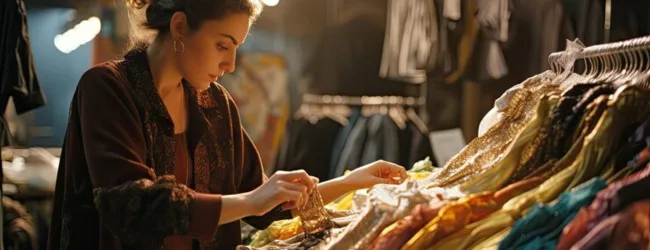
Purchasing clothing in bulk at wholesale prices and reselling them to individual customers or smaller retailers.
a. Why this Idea:
- Consistent demand for clothing across various categories.
- Buying in bulk allows for lower per-unit costs and higher profit margins.
- Opportunity to cater to specific niches or trends.
b. Licenses Required: Business registration and GST registration are typically required for wholesale businesses. You might also need specific licenses depending on the type of clothing (e.g., children’s wear might have specific regulations).
c. Investment Required: Medium to high. This includes the cost of bulk inventory purchase, storage space (warehouse or a large room), packaging materials, and marketing expenses. Initial investment can range from ₹1,00,000 to ₹10,00,000 or more.
d. How to Sell:
- Online B2B marketplaces.
- Supplying to small boutiques and retailers.
- Organizing wholesale exhibitions or trade shows.
- Creating your own online wholesale platform.
e. Any other Requirements:
- Strong understanding of clothing trends and market demand.
- Relationships with reliable clothing manufacturers or wholesalers.
- Efficient inventory management system.
- Logistics and distribution network.
f. Challenges in the Idea:
- High initial investment in inventory.
- Managing large volumes of stock.
- Keeping up with changing fashion trends.
- Competition from established wholesalers and retailers.
g. How to overcome the Challenges:
- Conduct thorough market research to identify profitable niches.
- Negotiate favorable terms with suppliers.
- Implement an efficient inventory management system to avoid overstocking or stockouts.
- Develop strong relationships with potential buyers.
- Offer competitive pricing and good customer service.
h. Example: A business identifies a growing demand for sustainable and ethically sourced cotton clothing. They partner with manufacturers producing such garments and buy in bulk. They then resell these clothes to eco-conscious online retailers and boutiques, highlighting the ethical sourcing and quality of the materials. Their USP is the specialization in sustainable and ethical fashion at wholesale prices.
💡Pro Tip: If you want to start a business but have too many doubts, connect with a business expert from Boss Wallah for guidance – https://bw1.in/1116
4. Print-on-Demand Products Reselling
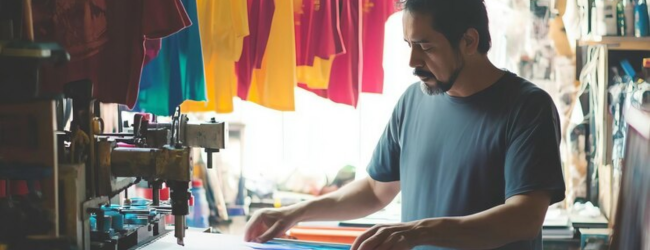
Designing or curating designs for products like t-shirts, mugs, posters, and phone cases, and selling them online through print-on-demand platforms that handle production and shipping.
a. Why this Idea:
- Low initial investment as you don’t need to hold any inventory.
- Wide range of customizable products.
- Ability to test different designs and niches easily.
- Print-on-demand platforms handle manufacturing and shipping logistics.
b. Licenses Required: Generally, a basic business registration and GST number might be required depending on your turnover.
c. Investment Required: Very low. Primarily involves design costs (if you hire designers or use design software) and marketing expenses. You might need to pay for setting up an online store on a print-on-demand platform. Initial costs can be as low as a few thousand rupees.
d. How to Sell:
- Creating your own online store integrated with print-on-demand services (Shopify, Etsy with Printful/Printify).
- Selling through online marketplaces like Amazon and Flipkart (if they support print-on-demand integration).
- Social media marketing.
e. Any other Requirements:
- Creative design skills or the ability to source appealing designs.
- Understanding of target audience preferences.
- Marketing and promotional skills to drive traffic to your online store.
f. Challenges in the Idea:
- Lower profit margins compared to holding your own inventory.
- Reliance on the quality and shipping of the print-on-demand partner.
- Competition from numerous other print-on-demand stores.
- Limited control over the production process.
g. How to overcome the Challenges:
- Focus on unique and high-quality designs.
- Thoroughly research and choose reliable print-on-demand partners with good reviews.
- Build a strong brand identity and engage with your audience.
- Offer excellent customer service.
h. Example: An artist creates a series of unique digital illustrations inspired by Indian folk art. They partner with a print-on-demand platform and offer these designs on t-shirts, tote bags, and home decor items through their own online store. Their USP is the original, culturally relevant designs that appeal to a specific niche.
5. Antique and Vintage Items Reselling

Sourcing antique furniture, collectibles, jewelry, and other vintage items and reselling them to enthusiasts and collectors.
a. Why this Idea:
- High value and demand for unique and rare antique/vintage items.
- Appreciation in value over time for certain collectibles.
- Appeals to a niche market of collectors and individuals seeking unique decor.
b. Licenses Required: Business registration might be needed depending on the scale. For high-value antiques, proper documentation of authenticity and provenance might be required.
c. Investment Required: Medium to high. Costs include sourcing antiques (which can be expensive), restoration (if needed), storage, and marketing. Initial investment can range from ₹50,000 to several lakhs depending on the type and quantity of antiques.
d. How to Sell:
- Online marketplaces specializing in antiques and collectibles (eBay).
- Your own e-commerce website.
- Participating in antique fairs and auctions.
- Opening a physical antique store or gallery.
e. Any other Requirements:
- Expert knowledge about antiques, their history, and value.
- Sourcing skills to find genuine and valuable items.
- Restoration skills (or connections with reliable restorers).
- Strong networking within the antique collector community.
f. Challenges in the Idea:
- Authenticating antiques and avoiding fakes.
- High cost of sourcing valuable antiques.
- Storage and handling of delicate items.
- Reaching the right target audience.
g. How to overcome the Challenges:
- Develop expertise in specific categories of antiques.
- Source from reputable auctions, estate sales, and trusted dealers.
- Invest in proper storage and insurance for valuable items.
- Market through specialized online platforms and antique enthusiast communities.
- Provide certificates of authenticity where possible.
h. Example: An individual with deep knowledge of antique Indian textiles sources rare and well-preserved shawls and sarees from different regions. They document the history and craftsmanship of each piece and sell them through an online platform catering to textile collectors and museums. Their USP is the expertise in authentic Indian textiles and the detailed historical information provided with each item.
6. Luxury Goods Reselling (Handbags, Watches, Accessories)
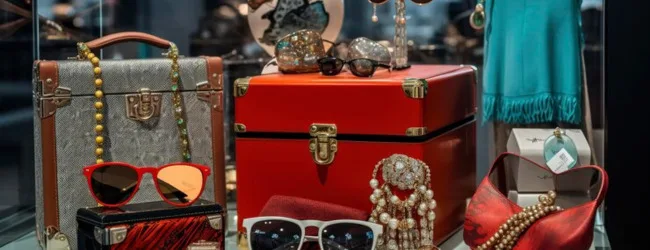
Buying and selling authenticated pre-owned luxury items like handbags, watches, jewelry, and accessories from high-end brands.
a. Why this Idea:
- Strong demand for luxury brands at more accessible prices.
- High resale value for many luxury items, especially limited editions or classic pieces.
- Growing online marketplaces dedicated to authenticated luxury resale.
b. Licenses Required: Business registration and GST number are usually required. Authentication expertise is crucial.
c. Investment Required: Medium to high. The cost of sourcing authentic luxury items can be significant. You might also need authentication services and secure storage. Initial investment can range from ₹1,00,000 to several lakhs.
d. How to Sell:
- Online platforms specializing in luxury resale (international platforms might be relevant depending on your reach).
- Your own e-commerce website.
- Consignment partnerships with luxury boutiques.
e. Any other Requirements:
- Expertise in authenticating luxury goods and identifying fakes.
- Network of reliable sources for pre-owned luxury items.
- Understanding of luxury brand trends and pricing.
- Trust and credibility to assure buyers of authenticity.
f. Challenges in the Idea:
- Risk of dealing with counterfeit items.
- High cost of authentic luxury goods.
- Building trust with buyers concerned about authenticity.
- Managing the condition and storage of delicate luxury items.
g. How to overcome the Challenges:
- Invest in professional authentication services.
- Source from trusted sellers and build relationships with them.
- Offer a guarantee of authenticity and a clear return policy.
- Provide detailed product descriptions and high-quality images showcasing the condition.
h. Example: An individual with a keen eye for designer handbags sources gently used but well-maintained bags from top luxury brands. They get each bag professionally authenticated and sell them online with a certificate of authenticity and detailed condition reports. Their USP is the guarantee of authenticity and the focus on sourcing bags in excellent condition.
7. Sneaker Reselling
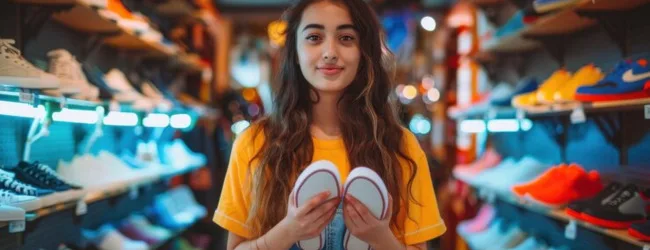
Buying limited-edition or highly sought-after sneakers and reselling them at a premium due to their scarcity and demand.
a. Why this Idea:
- Exploding sneaker culture and a huge demand for exclusive releases.
- Significant price appreciation for limited-edition sneakers in the secondary market.
- Active online communities and marketplaces for sneaker trading.
b. Licenses Required: Basic business registration and GST number might be needed.
c. Investment Required: Medium to high. Obtaining popular sneaker releases often requires significant upfront capital and effort (participating in raffles, buying from resellers). Initial investment can range from ₹50,000 to several lakhs.
d. How to Sell:
- Online sneaker marketplaces (international platforms are key here).
- Social media platforms and sneaker enthusiast groups.
- Consignment stores specializing in sneakers.
e. Any other Requirements:
- Knowledge of the sneaker market, upcoming releases, and their potential resale value.
- Ability to secure limited-edition sneakers at retail price.
- Networking within the sneaker community.
- Understanding of sneaker grading and authentication.
f. Challenges in the Idea:
- High competition to secure popular sneaker releases.
- Risk of buying counterfeit sneakers.
- Fluctuations in sneaker resale prices.
- Storage and handling of sneakers to maintain their condition.
g. How to overcome the Challenges:
- Stay updated on release schedules and participate in raffles.
- Buy from reputable sources and learn to identify fakes.
- Monitor market prices and trends.
- Store sneakers in appropriate conditions to prevent damage.
h. Example: A sneaker enthusiast closely follows upcoming releases and strategically participates in online raffles and local drops to acquire limited-edition sneakers. They authenticate each pair and resell them online to other enthusiasts, leveraging their knowledge of the market and building a reputation for sourcing rare and authentic sneakers. Their USP is their ability to consistently obtain highly coveted releases.
ALSO READ – Top 10 Profitable DIY Business Ideas to Start in 2025
8. Home Decor and Furnishings Reselling

Sourcing unique or trendy home decor items and furniture (new or gently used) and reselling them online or through pop-up shops.
a. Why this Idea:
- Growing interest in home styling and decor.
- Demand for unique and affordable home furnishings.
- Opportunity to curate specific styles (e.g., minimalist, bohemian).
b. Licenses Required: Basic business registration and GST number might be needed depending on the scale.
c. Investment Required: Medium. Costs include sourcing inventory, storage, and marketing. This can range from ₹30,000 to ₹2,00,000 depending on the scale and type of items.
d. How to Sell:
- Online marketplaces (Instagram, Facebook Marketplace, Etsy).
- Your own e-commerce website.
- Pop-up shops and home decor exhibitions.
- Collaborations with interior designers.
e. Any other Requirements:
- Good eye for design and home styling.
- Sourcing skills to find appealing items.
- Basic photography and styling skills to showcase products.
f. Challenges in the Idea:
- Sourcing unique and desirable items consistently.
- Storage and handling of bulky or fragile items.
- Shipping costs for larger items.
- Competition from established home decor retailers.
g. How to overcome the Challenges:
- Explore various sourcing options like local artisans, wholesalers, and estate sales.
- Focus on a specific style or niche to differentiate yourself.
- Offer local pickup options for large items to reduce shipping costs.
- Partner with local delivery services for larger items.
h. Example: An individual with a passion for minimalist design sources unique handmade ceramics and wooden decor items from local artisans. They style these items in aesthetically pleasing ways and sell them through an Instagram shop, emphasizing the craftsmanship and minimalist aesthetic. Their USP is the curated collection of locally sourced, handcrafted minimalist home decor.
9. Books and Stationery Reselling

Buying new or used books and stationery items at discounted prices or in bulk and reselling them online or offline.
a. Why this Idea:
- Consistent demand for books for education, leisure, and professional development.
- Growing market for unique and aesthetically pleasing stationery.
- Opportunity to cater to specific niches (e.g., academic books, rare editions, art supplies).
b. Licenses Required: Basic business registration and GST number might be needed depending on the scale.
c. Investment Required: Low to medium. Costs include purchasing inventory, storage, and online platform fees. This can range from ₹10,000 to ₹1,00,000 depending on the scale and type of books/stationery.
d. How to Sell:
- Online marketplaces (Amazon, Flipkart, used book platforms).
- Your own e-commerce website.
- Participating in book fairs and flea markets.
- Supplying to local libraries or educational institutions.
e. Any other Requirements:
- Knowledge of different genres and authors (for books).
- Awareness of current stationery trends.
- Good organizational skills for managing inventory.
f. Challenges in the Idea:
- Competition from established online bookstores and retailers.
- Shipping costs for books.
- Dealing with returns (especially for used books if condition is misrepresented).
- Keeping up with new releases and curriculum changes (for academic books).
g. How to overcome the Challenges:
- Focus on a niche (e.g., out-of-print books, specific academic subjects, eco-friendly stationery).
- Offer competitive pricing and bundle deals.
- Provide accurate descriptions and photos of the condition of used books.
- Implement efficient inventory management and shipping solutions.
h. Example: An individual passionate about classic literature sources used but well-maintained editions of classic novels from various sources. They categorize them meticulously, provide detailed descriptions of their condition, and sell them through an online platform catering to vintage book lovers. Their USP is the curated collection of quality used classic literature at affordable prices.
10. Baby and Kids Products Reselling
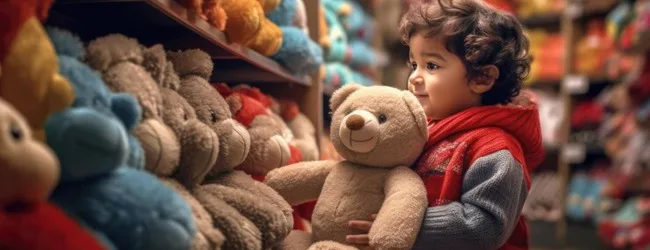
Buying new or gently used baby and kids’ products (clothing, toys, gear) and reselling them to parents.
a. Why this Idea:
- Constant demand as children outgrow items quickly.
- Parents often look for affordable options for baby and kids’ products.
- Growing awareness about sustainability and the benefits of buying pre-owned items.
b. Licenses Required: Basic business registration and GST number might be needed depending on the scale. Ensure that the products you resell meet safety standards.
c. Investment Required: Low to medium. Costs include sourcing inventory, cleaning (for used items), storage, and marketing. This can range from ₹20,000 to ₹1,50,000 depending on the scale and type of products.
d. How to Sell:
- Online marketplaces (Instagram, Facebook Marketplace, dedicated parenting platforms).
- Your own e-commerce website.
- Organizing local swap meets or sales.
- Consignment options through local children’s boutiques.
e. Any other Requirements:
- Knowledge of baby and kids’ product categories and brands.
- Ability to assess the quality and safety of used items.
- Good communication and understanding of parents’ needs.
f. Challenges in the Idea:
- Ensuring the safety and hygiene of resold baby products.
- Dealing with returns due to size or preference.
- Competition from new product retailers and other resellers.
g. How to overcome the Challenges:
- Thoroughly inspect and clean all used items before reselling.
- Clearly state the condition of the products and provide accurate sizing information.
- Offer a reasonable return policy.
- Focus on specific niches like organic baby clothing or educational toys.
h. Example: A parent with experience in baby products sources gently used but high-quality baby gear (strollers, carriers, bouncers) from other parents. They clean and sanitize these items thoroughly and resell them online at affordable prices, emphasizing the quality and cost-effectiveness. Their USP is the focus on providing safe and reliable pre-owned baby gear from trusted brands.
Need Expert Guidance?
Starting a business can be challenging, but you don’t have to do it alone! At Boss Wallah, our 2,000+ business experts are ready to provide valuable insights and guidance. Whether you need help with marketing, finance, sourcing, or any other area of any business, our business experts are here to help you succeed- https://bw1.in/1116
Confused about Which Business to Start?
Want to start your own business but unsure which one to choose? Explore Boss Wallah, where you’ll find 500+ courses by successful business owners, featuring practical, step-by-step guides on starting and growing various businesses. Find your perfect business idea today – https://bw1.in/1111
Conclusion
The reselling business in India offers a plethora of opportunities for individuals with varying levels of investment and expertise. By identifying high-demand niches and implementing effective strategies for sourcing, marketing, and customer service, aspiring entrepreneurs can build successful and sustainable ventures. Remember to conduct thorough market research, understand the legal requirements, and adapt to the evolving needs of the Indian consumer market to thrive in the dynamic world of reselling.
Frequently Asked Questions (FAQs)
1 . What exactly is a reselling business?
- A reselling business involves purchasing goods from various sources (e.g., wholesalers, manufacturers, individuals, thrift stores) and then selling them to end consumers at a profit. The reseller acts as a middleman, adding value through curation, marketing, and distribution
2 . Is the reselling business profitable in India?
- Yes, the reselling business can be quite profitable in India, especially with the growth of online marketplaces and increasing consumer demand across various product categories. Profitability depends on factors like the niche chosen, sourcing efficiency, pricing strategy, and marketing efforts.
3 . What are the legal requirements to start a reselling business in India?
- The legal requirements depend on the scale and nature of your business. Generally, you might need to register your business (as a sole proprietorship, partnership, or LLP), obtain a GST registration if your turnover exceeds the threshold, and comply with relevant consumer protection laws. Specific product categories might have additional regulations.
4 . How much investment is required to start a reselling business?
- The investment required varies significantly depending on the chosen niche. Some reselling businesses, like print-on-demand or used clothing reselling on a small scale, can be started with a very low initial investment (₹5,000 – ₹20,000). Others, like wholesale clothing or luxury goods reselling, might require a much higher initial investment (₹1,00,000 or more).
5 . What are the best online platforms for reselling in India?
- Several online platforms are popular for reselling in India, including:
- General marketplaces: Amazon, Flipkart, OLX, Quikr.
- Social media platforms: Instagram, Facebook Marketplace.
- Specialized reselling apps: Meesho (for various categories), international platforms like Poshmark (if accessible).
- Building your own e-commerce website (Shopify, Wix).
6 . How can I find reliable suppliers for my reselling business?
- Finding reliable suppliers depends on your chosen niche. Options include.
- Wholesalers and distributors.
- Manufacturers.
- Thrift stores and second-hand shops.
- Online wholesale marketplaces.
- Directly from individuals (for used goods).
- Attending trade shows and industry events.
7 . How do I determine the right pricing for my resold products?
- Consider factors like:
- Your cost of goods (including sourcing, cleaning, and any refurbishment).
- Market prices for similar items.
- The condition and rarity of the product.
- Your target audience and their willingness to pay.
- Your desired profit margin.
- Shipping and handling costs.
8 . What are some common mistakes to avoid in the reselling business?
- Common mistakes include:
- Not conducting thorough market research.
- Overpaying for inventory.
- Misrepresenting the condition of products.
- Poor customer service.
- Ineffective marketing.
- Not managing inventory properly.
- Ignoring legal and regulatory requirements.


